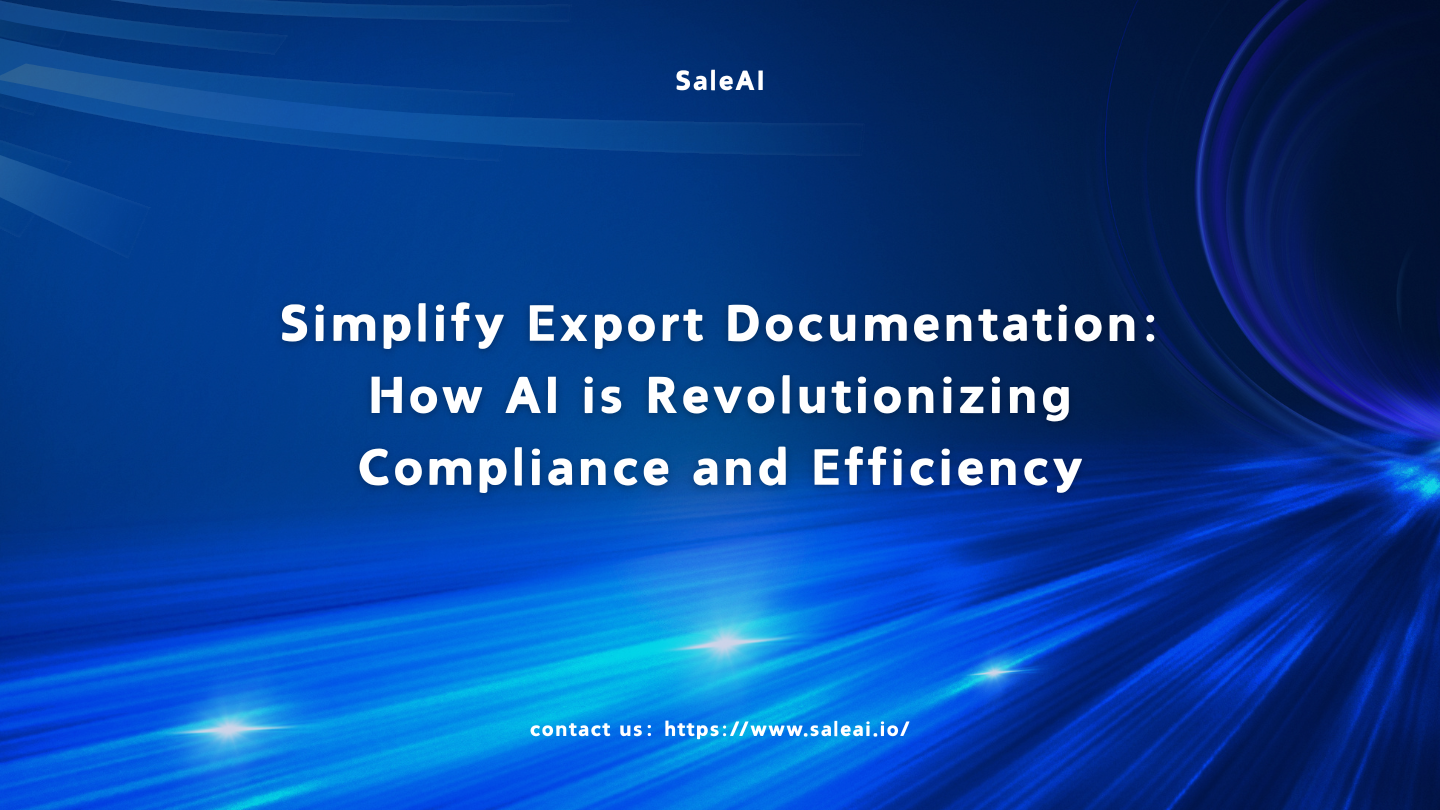Introduction: The Burden of Export Documentation
Export documentation is one of the most critical yet tedious aspects of global trade. From invoices and packing lists to certificates of origin and customs declarations, each transaction requires meticulous attention to detail. Mistakes in documentation can lead to delays, fines, or even rejected shipments, putting your business at risk.
The traditional process of preparing export documents is time-consuming, error-prone, and highly manual. But thanks to advancements in Artificial Intelligence (AI), exporters can now automate these workflows, reduce errors, and ensure compliance with ease.
AI isn’t just a buzzword—it’s a practical solution to one of the biggest pain points in exporting.
The Challenges of Manual Export Documentation
- Time-Consuming: Preparing documents manually for each shipment can take hours, slowing down your operations.
- Error-Prone: Mistakes in documentation, such as incorrect HS codes or missing details, lead to costly delays and fines.
- Complex Regulations: Staying updated with constantly changing trade and customs regulations is a daunting task.
- High Costs: Manual processes often require additional staff or external consultants, increasing operational expenses.
AI addresses these challenges by automating the documentation process, ensuring accuracy, and keeping you compliant with international regulations.
How AI is Transforming Export Documentation
a. Automated Document Generation
AI tools streamline the creation of export documents by auto-filling forms and ensuring all required fields are complete.
- How It Works: AI pulls data from your CRM, ERP, or order management systems to generate documents like invoices, packing lists, and shipping labels.
- Impact: Save hours of manual work while reducing the chances of errors.
- Example: SaleAI automatically generates a commercial invoice for a shipment to Europe, complete with accurate HS codes and tariff details.
💡 Pro Tip: Integrate AI tools with your existing systems to create a seamless documentation workflow.
b. Real-Time Compliance Checking
AI ensures your documents meet the latest international trade regulations, reducing the risk of non-compliance.
- How It Works: AI scans trade databases and customs regulations to verify that your documents are accurate and complete.
- Impact: Avoid shipment delays, fines, and legal complications.
- Example: SaleAI flags a missing certificate of origin for a shipment to a free trade agreement (FTA) country, ensuring compliance before submission.
💡 Further Reading: World Customs Organization: Trade Compliance Tools
c. Intelligent Data Validation
AI cross-checks your data against buyer requirements, trade agreements, and shipping regulations to ensure accuracy.
- Impact: Reduce errors such as incorrect product descriptions, mismatched quantities, or invalid HS codes.
- Example Insight: An AI tool identifies an incorrect HS code for a product, preventing a customs delay at the destination port.
💡 Explore More: International Trade Centre: HS Code Validation
d. Document Translation and Localization
AI-powered language tools translate export documents into local languages, ensuring they meet buyer and regulatory requirements in different countries.
- Impact: Improve communication with international buyers and avoid misunderstandings.
- Example: An exporter uses an AI tool to translate a packing list into Spanish for a buyer in Mexico, ensuring clarity and compliance.
💡 Pro Tip: Use AI translation tools that are specifically designed for trade documentation to maintain accuracy.
e. Streamlined Document Storage and Retrieval
AI helps organize and store export documents in a centralized, searchable database.
- How It Works: AI tools tag and categorize documents by shipment, buyer, or product, making retrieval fast and easy.
- Impact: Eliminate time wasted searching for paperwork and improve audit readiness.
- Example: SaleAI stores all shipping documents for a specific buyer in one place, simplifying future transactions and compliance reviews.
💡 Related Insight: Harvard Business Review: The Digital Transformation of Documentation
The Benefits of AI in Export Documentation
- Time Savings: Automate repetitive tasks to focus on growing your business.
- Error Reduction: Minimize costly mistakes with intelligent data validation.
- Improved Compliance: Stay updated with global trade regulations effortlessly.
- Cost Efficiency: Reduce reliance on manual processes and external consultants.
- Scalability: Handle more shipments without increasing your administrative workload.
💡 Did You Know? According to a report by Accenture, businesses that adopt AI in documentation processes see a 30% reduction in administrative costs.
How SaleAI Simplifies Export Documentation
SaleAI is designed to take the complexity out of export documentation. Here’s what it offers:
- Automated Document Creation: Generate invoices, packing lists, and certificates of origin with just a few clicks.
- Compliance Alerts: Get real-time updates on regulatory changes and ensure your documents meet all requirements.
- Integrated Workflows: Connect SaleAI with your CRM, ERP, or shipping software for a seamless experience.
- Data Accuracy Checks: Validate information to prevent errors and avoid delays.
- Centralized Document Storage: Store, organize, and retrieve documents effortlessly for audits or future transactions.
With SaleAI, you’ll never have to worry about documentation errors or compliance issues again.
Why Exporters Need AI for Documentation Now
The global trade landscape is becoming increasingly complex, with stricter regulations and rising buyer expectations. Exporters who rely on manual documentation processes risk falling behind competitors who are leveraging AI for speed, accuracy, and compliance.
AI-powered tools like SaleAI are not just a convenience—they’re a necessity for staying competitive in today’s fast-paced markets.
Conclusion: Simplify Export Documentation with AI
Export documentation doesn’t have to be a headache. With AI, you can automate tedious tasks, ensure compliance, and improve operational efficiency. Tools like SaleAI empower exporters to focus on what really matters—building relationships, expanding into new markets, and driving revenue growth.



